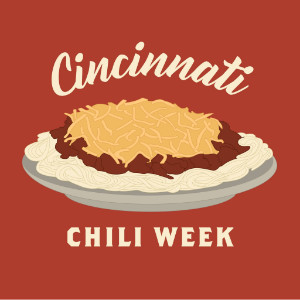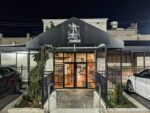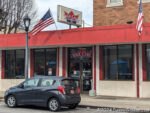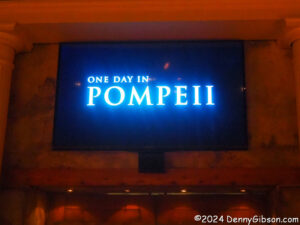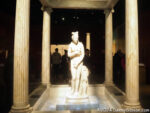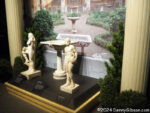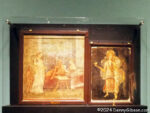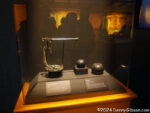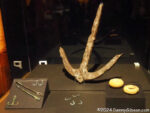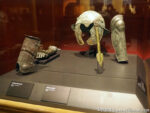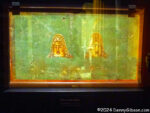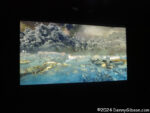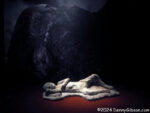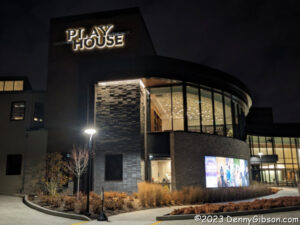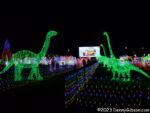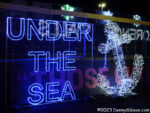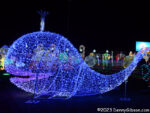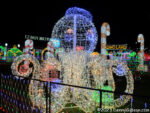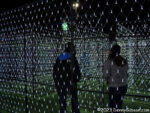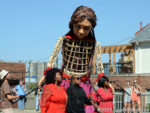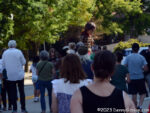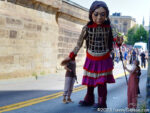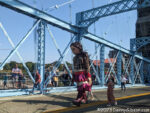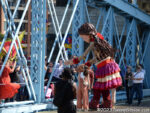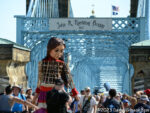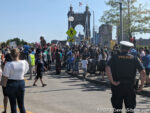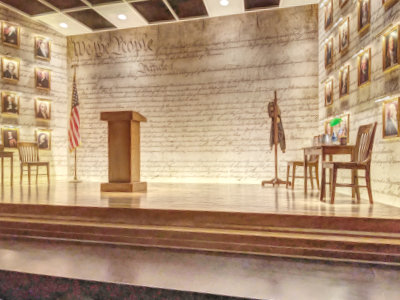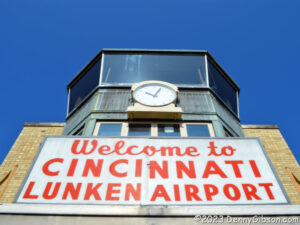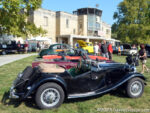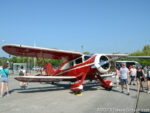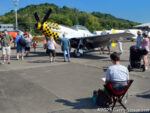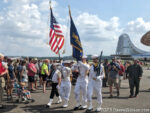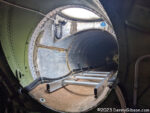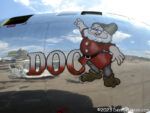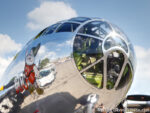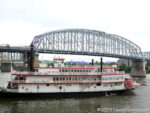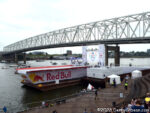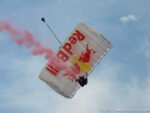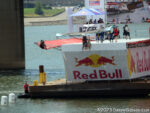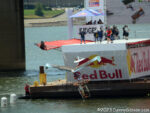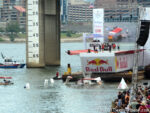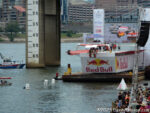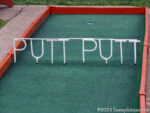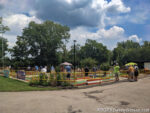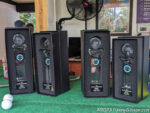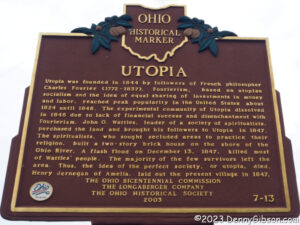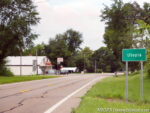 For the third week in a row, I’m posting about visiting a new-to-me museum. The first of the three (Small Wonders (And More)) was triggered by an online reference and the second (Miami Valley Veterans Museum) by a friend’s spontaneous suggestion but this one is completely on me. I say that I use canned posts here when my life is either too busy or too boring. My life was not too busy this week but, without some purposeful action on my part, it would have been too boring and I’d have posted something from the warehouse. That purposeful action was little more than typing “Cincinnati museums” into a search engine and scanning the results.
For the third week in a row, I’m posting about visiting a new-to-me museum. The first of the three (Small Wonders (And More)) was triggered by an online reference and the second (Miami Valley Veterans Museum) by a friend’s spontaneous suggestion but this one is completely on me. I say that I use canned posts here when my life is either too busy or too boring. My life was not too busy this week but, without some purposeful action on my part, it would have been too boring and I’d have posted something from the warehouse. That purposeful action was little more than typing “Cincinnati museums” into a search engine and scanning the results.
Quite a few lists turned up, and there were several museums that appeared on nearly all of them. One came from TripAdvisor, one of my favorite providers of crowd-sourced lists. The Greater Cincinnati Police Museum is currently number one on their list of Cincinnati Museums when sorted by “traveler ranking” and sixth when sorted by “traveler favorites”. More importantly for my purposes, it was the only top twelve entry by either sorting method that I had not visited.
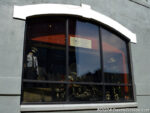 I soon corrected that and soon learned that those high marks at TripAdvisor were well deserved. The museum is on the second floor and, while things are well-marked outside, figuring that out took a little doing once inside. A sign that stood in the lobby had recently been stolen and there was universal agreement when I commented, “That sure was ballsy.” Potential issues with the free on-street parking in front of the museum are avoided by displaying a dated tag provided with admission. When I started toward the elevator with my tag, a fellow whose name I failed to get volunteered to take it down for me. I was impressed before I even looked at the first exhibit.
I soon corrected that and soon learned that those high marks at TripAdvisor were well deserved. The museum is on the second floor and, while things are well-marked outside, figuring that out took a little doing once inside. A sign that stood in the lobby had recently been stolen and there was universal agreement when I commented, “That sure was ballsy.” Potential issues with the free on-street parking in front of the museum are avoided by displaying a dated tag provided with admission. When I started toward the elevator with my tag, a fellow whose name I failed to get volunteered to take it down for me. I was impressed before I even looked at the first exhibit.
 “This is why the museum exists,” Ed, my guide, told me when we did reach that first exhibit. I had seen several pictures of Handsome over the years so had some idea of what he meant. Cincinnati’s first “police dog” was rescued from the city’s rough and tumble riverfront in the last years of the nineteenth century and served the department until his death in 1911. Handsome’s story, including numerous captures, is told here.
“This is why the museum exists,” Ed, my guide, told me when we did reach that first exhibit. I had seen several pictures of Handsome over the years so had some idea of what he meant. Cincinnati’s first “police dog” was rescued from the city’s rough and tumble riverfront in the last years of the nineteenth century and served the department until his death in 1911. Handsome’s story, including numerous captures, is told here.
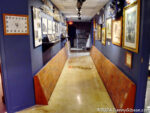 The word “Greater” in the museum’s name is significant. The museum honors not only the City of Cincinnati Police Department but many other law enforcement agencies in southern Ohio, southeast Indiana, and northern Kentucky. It first opened in 2002 on 8th Street on the west side of downtown then moved to its current Reading Road location in 2015. At the time of the move, bricks paving a walkway and inscribed with donor names were rescued and now line this hallway beneath rows of historic photos and certificates.
The word “Greater” in the museum’s name is significant. The museum honors not only the City of Cincinnati Police Department but many other law enforcement agencies in southern Ohio, southeast Indiana, and northern Kentucky. It first opened in 2002 on 8th Street on the west side of downtown then moved to its current Reading Road location in 2015. At the time of the move, bricks paving a walkway and inscribed with donor names were rescued and now line this hallway beneath rows of historic photos and certificates.
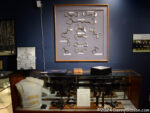
 Most if not all of the people working at the museum are retired police officers. Both Ed and Rick, who split guiding me on what was essentially a personal tour, were. Ed mentioned that he had spent a few years on a SWAT team as we looked over the associated display. Rick may have also spent time with SWAT but I don’t know that. I do know that both of these guys were pretty familiar with much of the gear on display.
Most if not all of the people working at the museum are retired police officers. Both Ed and Rick, who split guiding me on what was essentially a personal tour, were. Ed mentioned that he had spent a few years on a SWAT team as we looked over the associated display. Rick may have also spent time with SWAT but I don’t know that. I do know that both of these guys were pretty familiar with much of the gear on display.
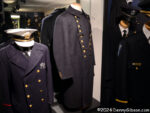
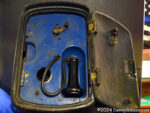 All police gear displayed in the museum is obsolete but some things are more obsolete than others. When the Civil War ended, Cincinnati was able to pick up plenty of surplus uniforms at a great price with only a change of buttons required to outfit the police. Alexander Bell patented the telephone in March of 1876. In September 1879, the first police telephone exchange in the world went live in Cincinnati.
All police gear displayed in the museum is obsolete but some things are more obsolete than others. When the Civil War ended, Cincinnati was able to pick up plenty of surplus uniforms at a great price with only a change of buttons required to outfit the police. Alexander Bell patented the telephone in March of 1876. In September 1879, the first police telephone exchange in the world went live in Cincinnati.

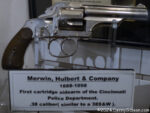 Of course, there are lots of guns (all disabled) displayed in the museum along with other tools of the trade such as breathalizers, radar guns, and fingerprinting equipment. That communication console is a little more modern than the one my cousins frequently staffed when their dad was a police chief in Indiana but looks pretty crude when compared to the multi-screened internet-connected rig that my son operates as a police dispatcher in California.
Of course, there are lots of guns (all disabled) displayed in the museum along with other tools of the trade such as breathalizers, radar guns, and fingerprinting equipment. That communication console is a little more modern than the one my cousins frequently staffed when their dad was a police chief in Indiana but looks pretty crude when compared to the multi-screened internet-connected rig that my son operates as a police dispatcher in California.
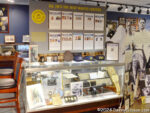 There is one notable exception to the claim that everything in the museum is obsolete. Posters for the FBI’s “Ten Most Wanted Fugitives” are kept current. Seeing them here reminded me of the days when reading these was what you did while waiting in line to buy stamps or get a package weighed. One of several reasons that they are no longer displayed is that the wall space is better used to promote the purchase of commemorative stamps and the like. The posters are still there but they are now kept in a binder behind the counter available for “on demand” viewing. Just like on the FBI website.
There is one notable exception to the claim that everything in the museum is obsolete. Posters for the FBI’s “Ten Most Wanted Fugitives” are kept current. Seeing them here reminded me of the days when reading these was what you did while waiting in line to buy stamps or get a package weighed. One of several reasons that they are no longer displayed is that the wall space is better used to promote the purchase of commemorative stamps and the like. The posters are still there but they are now kept in a binder behind the counter available for “on demand” viewing. Just like on the FBI website.
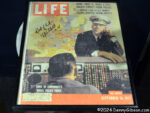 The pictured magazine is kept in protective custody but there is another copy nearby where the story of “Cincinnati’s Model Police Force” of 1957 can be accessed. The Greater Cincinnati Police Museum is open from 10:00 to 4:00 on Tuesday, Thursday, and Saturday.
The pictured magazine is kept in protective custody but there is another copy nearby where the story of “Cincinnati’s Model Police Force” of 1957 can be accessed. The Greater Cincinnati Police Museum is open from 10:00 to 4:00 on Tuesday, Thursday, and Saturday.

